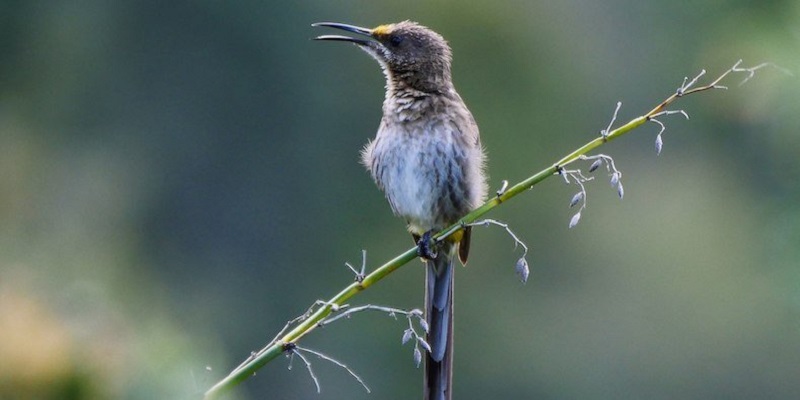
This article was originally published in Future Earth’s award-winning, independent, sustainability-focused Anthropocene Magazine.
You probably recognize the song of the male Eastern bluebird. But did you know that female bluebirds sing, too? So do female Venezuelan troupials and white-browed sparrow-weavers, both of which often duet with their mates. Indeed, recent research suggests that the females of most songbird species sing, and that the same was true for the common ancestor of modern songbirds.
The studies that produced this knowledge were all led by woman scientists. In fact, according to a recent study in Animal Behavior, most of what we know about female birdsong is thanks to women—another argument, the paper’s authors say, for increasing diversity in science.
The study started as an observation shared by members of Kevin Omland’s avian evolution lab at the University of Maryland, Baltimore County. “We had noticed that a lot of the papers published on female birdsong had been written by women,” said Casey Haines, the first author on the new paper, which she wrote as an undergraduate. “We had this feeling like, maybe there’s something going on here.”
To perform their meta-analysis, the researchers made a corpus of all the female birdsong papers published in the past 20 years. They then paired each paper with a more general birdsong paper published at a similar time, in either the same or a similar journal. They focused on the first author of each paper—generally the person who did the bulk of the research.
They found that women were the first author on 68% of female birdsong papers. When it came to more general birdsong papers, women were the first author only 44% of the time. In other words, “first authors of female birdsong papers are significantly more likely to be women,” the researchers write, suggesting that “women are making a greater contribution” to this particular emerging field.
In an accompanying article in The Conversation, some of the paper’s authors delve into why this area of study has been overlooked. Historically, they write, much birdsong research took place in the Northern hemisphere, where male birds tend to dominate the soundscape. Expansion of this research into the tropics—in other words, increasing the diversity of study locations—led to the realization that female birds sing more than was previously realized, prompting a wave of studies over the past few decades.
What is harder to explain is why women in particular have jumped in to fill this gap. “More diverse groups of researchers may ask a broader range of questions, utilize more varied methods and tackle problems from a wider range of perspectives,” the authors write in the Conversation piece. (Maybe some of the scientists were motivated by solidarity—members of underrepresented groups often understand what it’s like to make noise and yet not be heard.)
Even this study used methods that may have flattened the full picture, something the authors are careful to point out. In their overall dataset, the authors determined gender by looking at names and occasionally photos, rather than asking for self-identification, and used a binary gender framework, despite its limited ability to reflect the world. The paper also “focused on only one aspect of diversity,” said Haines, leaving out race, ethnicity, socioeconomic status, sexual orientation, and other identities, histories and attributes that have historically limited scientific inclusion.
Also beyond the purview of this study is another very important question: how this particular subfield invites and supports the work of women researchers. Although success stories like this one are both interesting and encouraging, people, for the most part, already know why it’s better to include many diverse perspectives in research. As a tool that helps us understand a world we all share, it should be honed and wielded by everyone.
As has also been increasingly detailed over the past few decades, in both research and the press, the barriers that keep women and minorities out of science aren’t philosophical—they’re practical. Sexual harrassment drives women out of academia, and “macho” fieldwork culture alienates LGBTQ people. Structural racism blocks people of color from enjoying the same funding and employment opportunities as their white colleagues.
These are known forces we can fight against, in our pursuit of better research and a better world. The harder institutions work to welcome people from underrepresented groups into science, the more we’ll know about female birdsong—and everything else, too.
Source: Haines, Casey et. al. “The role of diversity in science: A case study of women advancing female birdsong research.” Animal Behavior, 2020.